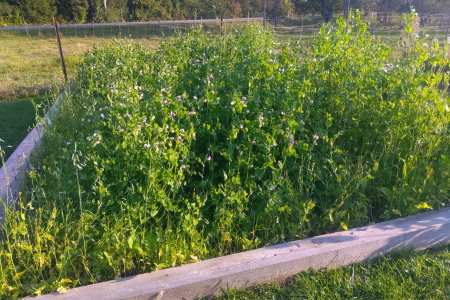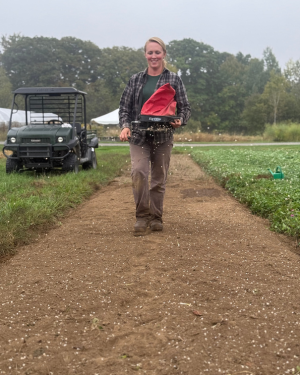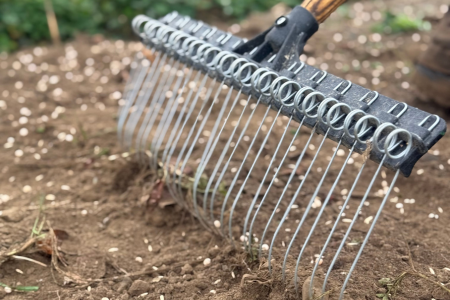- Buckwheat | Quick & Easy Summer Insectary/Weed-Control Cover Crop
- Video: Cover Cropping for Field & Garden with Collin Thompson | Johnny's Webinar Series
- Johnny's Cover Crop Termination Bar
- Cover Crop & Farm Seed Uses | Top 10 Applications & Benefits
- The Benefits of Grass–Legume Combinations in Cover Cropping
- Video: Garden Cover Crops & Green Manures
- The Cover Crop Decision-Making Process | 5 Steps for Deciding What to Plant When & Where
- Winter Cover Crops - A Fine Time to Build Soil | Johnny's Selected Seeds
- Cover Cropping for Field & Garden | Johnny's Educational Webinar Resources
- Webinar Slide Deck | Garden Cover Crops | PDF
- 5 Steps to Choosing a Spring Cover Crop
- Garden Cover Crops & Green Manures
- Cover Crop Termination for Organic Growers
- Soil Health and Management Strategies | Johnny's Webinar Series
- Cover Crop Planting Guide for Home Gardens & Raised Beds
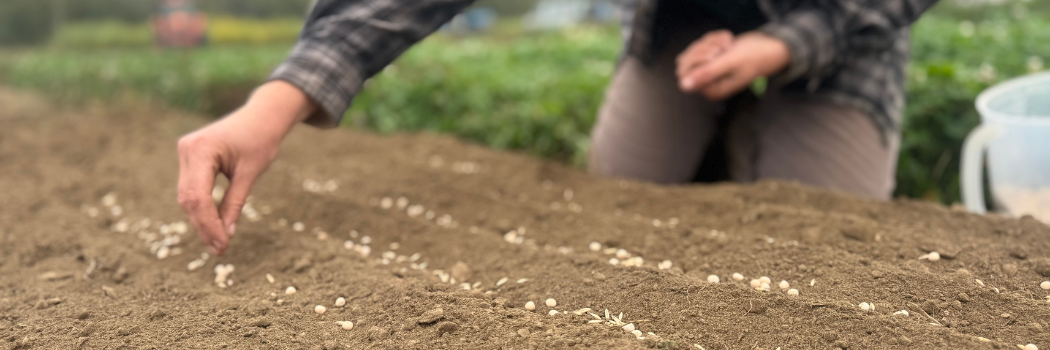
Cover Crop Planting for Home Gardens & Raised Beds: Step-by-Step Guide
By Jill Porchetta, Farm Technician, Johnny's Selected Seeds
From soil fertility to weed suppression, the benefits of cover crops need not be limited to large-scale farm operations; home gardens can benefit from all that cover cropping has to offer! Here we provide a step-by-step tutorial, designed to assist growers in adding cover crops to their garden.
Adding a Cover Crop Rotation
Home gardeners typically have limited growing space compared to the average commercial farmer, but it’s still possible to create cover crop rotations in small spaces. For example, a grower might plant a garden bed or raised bed with our Spring Green Manure Mix in the spring, terminate the cover crop mid-summer, and follow it with a planting of fall leafy greens. Or, a grower may follow an early crop of peas and radishes with a summer planting of buckwheat. The same basic principles of cover cropping apply at any scale, and no garden is too small to benefit.
How to Plant Cover Crops
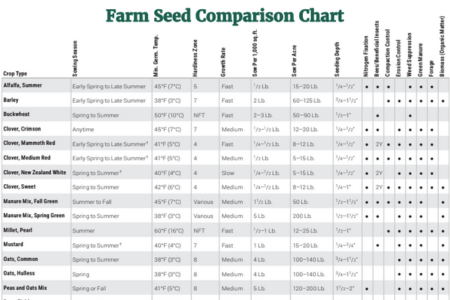
Our Farm Seed Comparison Chart is a great place to start when choosing a cover crop. Compare hardiness levels and soil-building properties for every cover crop we offer.
Species Selection
When choosing which cover crops will work best for you, it’s important to consider several elements:
- Your soil health goals: for example, erosion control or weed suppression, adding nitrogen or reducing soil compaction. Each cover crop species has its unique set of benefits to offer your garden.
- When you are planting; different cover crops excel at different times of year.
- Your hardiness zone; this is particularly important if you are looking for a cover crop that will winter-kill.
- A plan for terminating your cover crop (more about termination below).
Doing a soil test can help you define your cover cropping goals and influence your choice of cover crops to plant. Once you've defined your goals, our Farm Seed Comparison Chart will help guide you to choose the best cover crop species for your garden or raised bed.
Ground Preparation
Start by removing weeds so you have a clean seed bed without competition from weeds. A shallow cultivation can be done with a rake or hoe over the whole surface area to eliminate any threadstage weeds that may have just germinated. If your bed is very weedy, you may want to use a silage tarp to smother larger weeds and create a stale seedbed. If your soil is compacted, a broadfork can be used to loosen and aerate the soil without bringing new weed seeds to the surface. Once weeds have been eliminated, rake the bed to make an even, level seed bed.
Planting
Direct Seeding: Cover crops can be direct seeded by hand, just as you would with crops like carrots, peas and spinach. Make close planting furrows (3-6” apart) with a rake or hoe, seed by hand, and cover with soil.
A general rule of thumb is to bury your seed to a depth that is about twice the thickness of that particular seed. (More detailed planting instructions for cover crops can be found in our key growing information pages for cover crops ).
You can also use your Jang or Earthway Seeder to quickly direct seed rows of some cover crop species such as peas. Check your seeder’s instruction manual to determine which crops it can accommodate.
Broadcast Seeding: Broadcasting by hand or with the Ev-n-Spred seeder is another way that you can plant your cover crop. The Ev-n-Spred can be used on beds as narrow as 6’ wide and can also be used to seed into residue (old plant debris). If your bed is narrower than 6’ wide, you can broadcast by sprinkling your seed by hand.
Broadcasting generally works best with smaller seeds like clover and alfalfa; however larger seeds can be broadcasted as well if you can ensure good soil contact and provide consistent moisture after seeding.
Lightly drag a tine rake over seeds after broadcasting to create better soil contact. Broadcasted cover crop seed can also be covered with a thin layer of straw to protect the seed, improve seed-to-soil contact, and increase moisture retention.
Seeding rate: Our growing instructions will provide a recommended seeding rate range. If you are direct seeding and have low weed pressure, you can seed at the lower end of the recommended range. If you are broadcasting or have higher weed pressure, it's best to plant on the higher end of the suggested rate.
Water
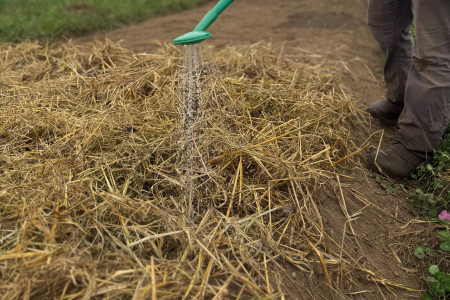
Consistent moisture is important while seeds are germinating. A thin layer of straw protects the seed, improves seed-to-soil contact, and increases moisture retention.Consistent moisture is important while seeds are germinating. Water with a watering can, sprinkler, or garden hose fitted with a wand or nozzle that will ensure a gentle flow of water.
If you know you will not be able to irrigate your cover crop, wait to plant until at least 1/2” rain is in your forecast.
Termination
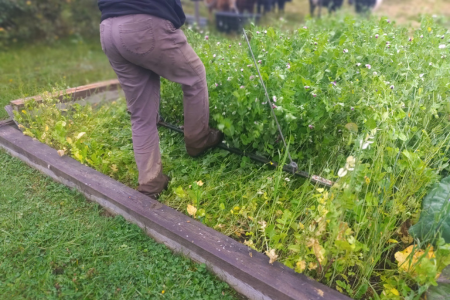
Terminating a cover crop by crimping it with a t-post.The final stage of cover cropping is terminating the cover crop (killing the crop so that the bed can transition to another crop). There are many termination methods that are accessible at the home-garden scale:
- Mowing can be accomplished with a string trimmer, walk-behind mower, or scythe.
- Tarping smothers the crop, slowly depriving the plants of nutrients over time.
- Crimping involves crushing the vascular stems of the crop to kill it, and is usually most successful if done when the crop is flowering. You can crimp a crop with something as simple as a T-post and piece of rope, or you can use our Cover Crop Termination Bar.
Some termination methods work better for different cover crops. Our article on Cover Crop Termination for Organic Growers includes detailed information on how to successfully terminate different cover crops, including a chart that provides the recommended termination methods for each of the cover crops we sell.
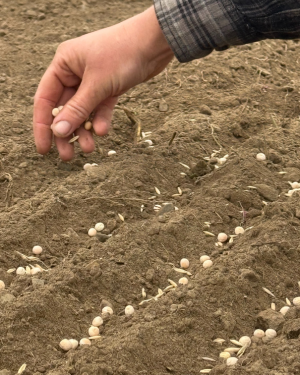
In raised beds and small spaces, cover crops can be direct seeded by hand.
Cover Cropping in Raised Beds
The principles of cover cropping in-ground, and the general steps outlined above, apply equally well to raised beds. Prepare your raised beds to be weed-free and well aerated; direct seed your cover crops; and irrigate as necessary. Terminate the cover crop with a method compatible with your raised bed size and height; for example, by string trimming, tarping, and/or crimping, depending upon the crop.
Learn More About Cover Cropping
- Johnny's Farm Seed & Cover Crops • Comparison Chart (PDF)
- Garden Cover Crops & Green Manures • with Collin Thompson, Johnny's Farm Ops Manager • Webinar Resources
- Cover Cropping for Field & Garden • with Collin Thompson, Johnny's Farm Ops Manager • Webinar Resources
- Cover Crop Decision-Making Tool • 5 Steps for Deciding What to Plant When & Where • Article
- Choosing a Spring Cover Crop • Article
- Benefits of Grass–Legume Combinations • Article
- Buckwheat : A Quick, Easy Summer Insectary & Weed-Control Cover Crop • Article
- The Importance of Soil • Article
- Intro to Farmscaping: Insectary, Trap, & Repellent Crops for Pest Management • Article
- Winter Cover Cropping: A Fine Time to Build Soil • Article


